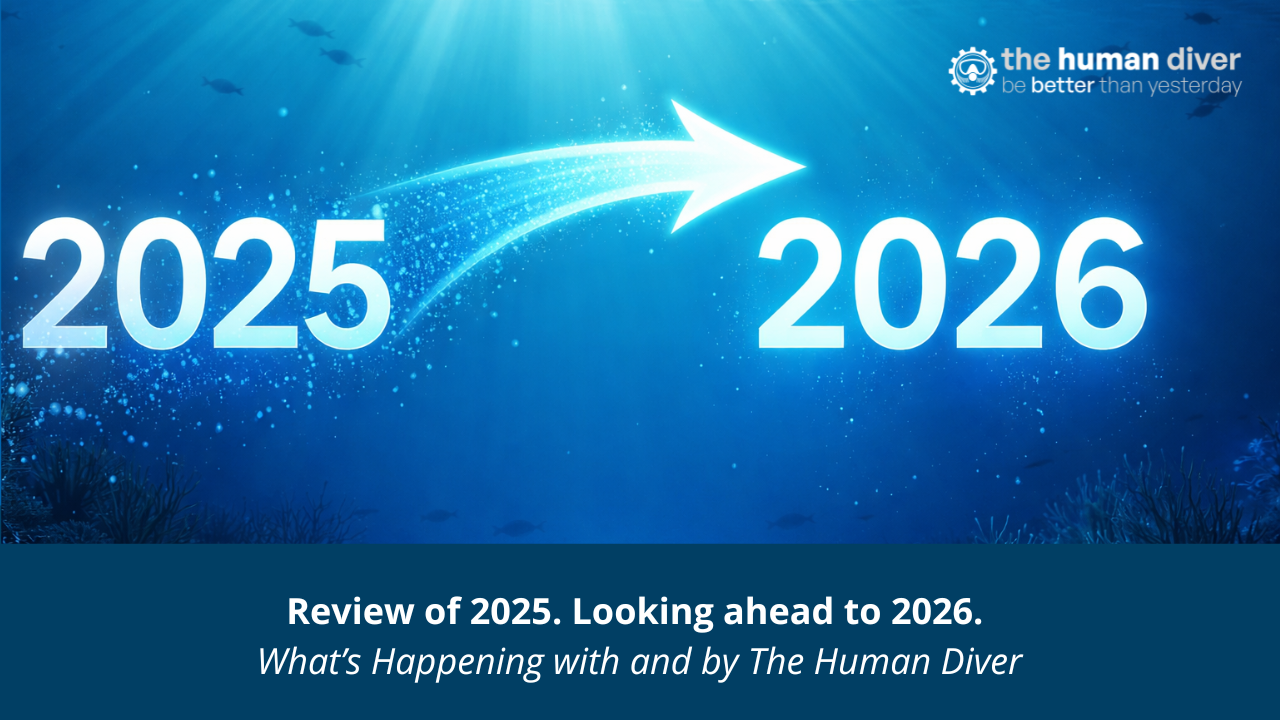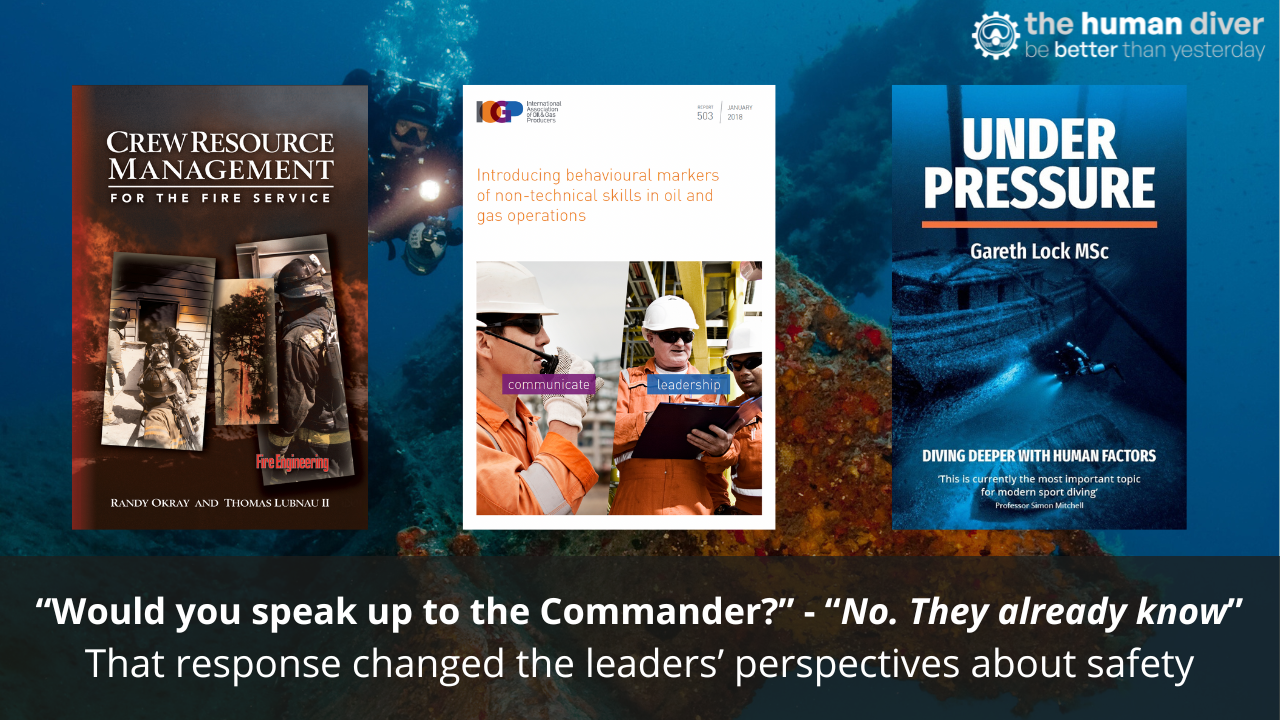
Unlocking the Secrets of Safer Diving: A Guide to Learning Reviews in Diving
Oct 21, 2023This week Jenny penned a powerful blog about the death of one of her fellow divers and the inevitable jumping to conclusions, assumptions, and counter-factuals that took place. Unfortunately, this behaviour is common. Often the cry is "let's wait for the investigation" but the investigations that take place are often from a position of litigation, which means the focus is on blaming one party or another rather than learning about what happened so that learning can happen. Learning doesn't happen when we find out people broke the rules or they deviated from the standards because, if that is what caused accidents, we'd have way more diving deaths than we do. Rather, we have to understand the local rationality and influential factors of those involved, not just those at the 'sharp end' ( divers), but also those involved at higher levels within the 'system' - the instructors, the dive centres, the boat operator, the training agencies, and the equipment manufacturers. That's where The Human Diver's "Learning Review Guide in Diving" comes into play. It provides a structured framework grounded in academic research and operational rigour.
Delving into the Depths of Learning Reviews
Since 2016, The Human Diver has been on a mission to educate the diving industry about the significance of human factors, non-technical skills, psychological safety, Just Culture, and improved incident reporting. These concepts have already proven their value in high-risk fields like aviation, medicine, and the nuclear sector. Despite the recognition of the value of human factors in high-risk industries, a common question has arisen within the non-commercial diving community: "Do human factors really play a part in adverse events underwater?"
Unraveling the factors and conditions that lead to diving incidents and the role human factors play in the unfolding of an incident is a complex challenge for several reasons:
-
Lack of a Unified Reporting System: The absence of a reporting system that transcends multiple diving operations, including various agencies and scientific diving organisations, makes it difficult to gather and analyse useful data.
-
Variable Incident Definitions: Divers often define incidents differently, from minor increases in risk to more serious events, making it hard to standardise reporting.
-
Inadequate Review Processes: Traditional investigation processes often focus on blame rather than understanding why individuals made certain choices, which hinders effective learning.
The Learning Review Guide tackles this problem head-on, collaborating with Dr. Ivan Pupulidy, who developed a technique during his tenure at the US Forest Service. This approach centres on making sense of the local rationality of all individuals involved in diving, regardless of their role. It aims to understand the relationships, tensions, and conflicts within the complex system of diving. A blog was written on this topic in 2017!
Audience and Applicability
The guide caters to a wide audience, including commercial divers, scientific divers, military dive teams, media dive crews, project diving teams, diving centres, and diver training agencies. The rationale for this wide audience is the complex organisational structures that exist within which diving operations take place. Many adverse events stem from organisational factors, which can be either visible or incubating. To effectively address these weaknesses, a simpler guide will also be available for small teams, making learning from incidents more accessible. While designed for the diving domain, the Guide is likely to be applicable in any complex environment.
What's Inside the Guide?
This comprehensive guide is divided into two main sections:
-
Concepts and Guidance: The first section provides readers with the essential concepts and guidance on how to organise and run a Learning Review.
-
Additional Tools and Resources: The second section equips readers with additional tools and resources to enhance their Learning Review process, including recommended reading materials, and research papers.
For those who prefer an experiential learning approach, The Human Diver offers educational programs for a deeper dive into the subject matter.
Understanding the Complexity of Diving Incidents
Diving incidents and accidents are rarely black-and-white. They often occur in a complex environment where various factors converge. To make sense of these events and prevent future mishaps, it's essential to understand the concept of complexity in safety science.
Safety science recognises three domains in socio-technical systems:
-
Simple Systems: These systems have a direct cause-and-effect relationship. For example, pressing a button on a Buoyancy Compensation Device (BCD) inflates the bladder. Failures in simple systems are straightforward to address, and there is a clear 'right' and 'wrong'.
-
Complicated Systems: Complicated systems comprise multiple interdependent components, like a rebreather, which has multiple simple systems, some of them nested inside each other. This means that changes in one part can trigger a series of events, but these relationships are constrained by the system's design. Understanding complicated systems requires both analysis and experience.
-
Complex Systems: Complex systems are not linear and are affected by human involvement. These systems cannot be disassembled, fixed, and reassembled exactly the same way. Complex systems continually evolve, making it challenging to pinpoint causes and effects. To learn about complex systems, one must apply double- and triple-loop learning, addressing the context, values, and assumptions in the system.

Recognising the domain in which a diving incident occurs is crucial for effective analysis and prevention. Most often, diving incidents fall into the complex domain, where sensemaking is necessary to understand how the events unfolded. Applying a simple or complicated approach to a complex system will lead most likely to the wrong suggestions to improve safety.
Learning Reviews vs. Traditional Investigations
Learning Reviews offer a fresh perspective on incident analysis when compared to traditional investigations. Learning Reviews focus on learning how normal "work" (diving) is done rather than emphasising non-compliance. While traditional investigations tend to concentrate on compliance or non-compliance, Learning Reviews emphasise the following:
-
Understanding Human Fallibility: Learning Reviews recognise that all individuals, including the most experienced divers, are fallible and can make errors. These errors don't just happen by the diver, but also by the instructors/supervisors and at the organisational level too.
-
System-Centric Approach: They shift the focus from individuals to the entire system involved in the diving operation. The goal is to improve the entire system, not just pinpoint individual errors and try to fix the 'broken' human.
-
Context and Influential Factors: Learning Reviews explore how the context and influential factors within the system may have contributed to the actions taken. They aim to identify areas where improvements can be made to enhance safety by looking at what factors eroded the 'margins' or 'slack' within the system, and also identify where change cannot be applied.
By shifting the focus from compliance to understanding how it made sense for individuals to make certain choices, Learning Reviews offer a more effective approach to preventing future incidents. They empower diving teams to build safer systems and reduce the impact of performance-shaping or performance-influencing factors.

Steps to Conducting a Learning Review
The Learning Review process is comprehensive, and it starts with collecting information. The majority of poor decisions are down to incomplete situation awareness, and this is no different to a Learning Review - if you don't get the correct information in the collection phase, you will not make the correct decisions or analyses later on. Once the context-rich information has been collected from multiple perspectives, then look to build a story, but don't use a timeline for this purpose. It is much better to examine these influential factors into a Network Influence Map. The purpose of the map is to explore the factors that influenced the decisions and actions of those involved, and as the map develops, to create themes. The map provides a graphical representation of the event which makes it easier to show stakeholders the complexity of the event and the different perspectives that will exist in an adverse event.
The process of a Learning Review then takes this map and associated narrative and exposes it to experts who reflect on their own experience and look to see where else these influential factors might be present. They also, importantly, explain what they would have done in similar situations to prevent a similar outcomes. The goal is to move away from the event itself and understand what 'normal' work looks like.
Making sense of the story isn't easy as there are many biases working against us, many of them are explored in the guide. Critically, we have to consider the local rationality principle: "how did it make sense for those involved to do what they did, given their experience, knowledge, resources, and drivers."

The final stage is the production of Learning Products for the different stakeholders in the system. What a diver needs will likely be different to what an instructor or local supervisor needs, and that will be different to what a training agency staff member or manager in the office needs. A standard report doesn't really help anyone, other than person responsible for ticking off the requirement to product a post-event report!! The Learning Products should identify what factors reduce the 'margin' or 'slack' that means when things go wrong, those involved can't pick up the problems quick enough.
Summary
Diving provides an amazing opportunity to explore the underwater world. However, because the activity takes place in an inherently hazardous environment, safety must be a high priority. Note, safety can never be the number one priority all the time because we don't have infinite resources. The Human Diver's "Learning Review Guide for Diving" equips divers, dive teams, and organisations with the tools and knowledge needed to enhance safety, reduce the likelihood of incidents, and genuinely learn from past experiences by giving a tool by which they can reflect in an objective, but constructive, manner when something didn't go to plan. By focusing on the system and understanding the complex nature of diving incidents, this guide opens up new horizons for safer exploration below the surface.
You can download the 24-page Learning Review in Diving guide here

Gareth Lock is the owner of The Human Diver, a niche company focused on educating and developing divers, instructors and related teams to be high-performing. If you'd like to deepen your diving experience, consider taking the online introduction course which will change your attitude towards diving because safety is your perception, visit the website.
Want to learn more about this article or have questions? Contact us.










